Research Projects

Visuality, technologies and new forms of the moving image
The research project investigates the process and effect of new moving image technologies and their interfaces in both socio-historical and aesthetic terms. The transformations of the media are understood, especially since the video event, and their effects on the production of meaning. It also seeks to understand phenomena in the field of visual communication that imply relationships of interactivity.
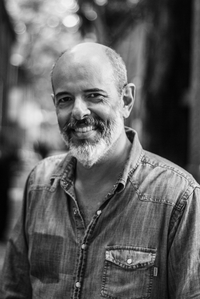
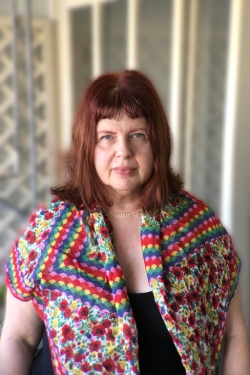

Towards a hermeneutic approach to design: interpretation, design and history
The problem posed by this research project is epistemological in nature: it seeks to reflect on ways of producing knowledge in the field of Design from an interpretive approach - the term ‘interpretive’, adopted here, refers to the concept of Verstehen (interpretation, understanding), as used in the hermeneutic tradition. The main aim of the project is to take the first steps towards building an interpretive epistemic basis for scientific studies in Design. At the conclusion of the research, it is hoped to present some theoretical and methodological guidelines that can guide future research in the area.
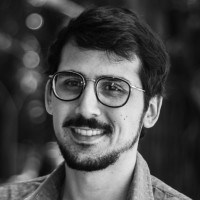

Theories of involvement for practices of autonomy: designing other territories in a world in trance
Based on the call for ‘planning guided by theories of involvement’, proposed by sociologist Ana Clara Torres Ribeiro, the research seeks to link, stitch and entangle authors, theories, practices and practitioners in the territories by creating a cartography that aims to tell stories - examples - capable of affecting and providing glimpses from their ways of doing things, of theories of involvement that provide tools to help social action dispute futures from the various worlds of the present. The intention is to contribute to the formulation of a critique of the model of progress and the notion of development constructed in modernity and in the political-cultural processes of the 20th century from the field of architecture, urbanism, design and urban planning. Drawing three images of involvement as a starting point - (1) autonomy and territories of commons (2) good living and places of decolonisation of thought (3) dreaming, fabulating and telling other stories - the research investigates ‘critical micro-ecologies’, understood as places, movements, collectivities, territorialities, built and maintained through practices of autonomy and processes of struggle and cooperation that point the way to the construction of an agenda for the transformation of paradigms for thought and action on the urban, the land and collective life in the context of the current civilisational and environmental crisis that we can associate with the word Anthropocene. .
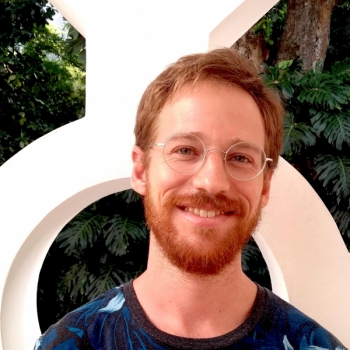

Technicalities and sensitivities in design education
Starting from a scenario in which technological mediation is constituted and condensed as a structural form of relations in an information society, this research takes a fresh look at practices in the field of design teaching. This study looks at how perceptions and sensitivities regarding the use of digital technologies are in some way representative in the context of Esdi's design course. Institutional and private initiatives regarding access to and use of digital technology at Esdi seem to be circumscribed by a whole universe of possibilities and values. The object of this research is to get to know the practices and reflections that take place around digital information and communication technologies in the context of a design course at a public university, ESDI, understanding that this use is a vector for the production of subjectivities in design teaching.
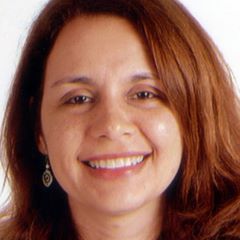

Systematisation and dissemination of scientific production and innovation in design at ESDI/UERJ through an open knowledge platform
Technological Initiation Project that aims to systematise and disseminate the scientific production of the Graduate Programme in Design on open access networks. Funded by FAPERJ. July 2024 - July 2025
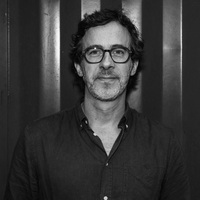

Speculative fabulations towards an anthropology through design
In line with the work plan submitted to Prociência/Uerj 2017 under the title ‘From social innovation to collective imagination: a study of new forms of engagement and participation and their correspondence with teaching and research in design’, the postdoctoral research project is dedicated to deepening and specifying the general objectives presented to Prociência, namely: to investigate the relationships between forms of engagement and participation with design teaching and research processes through a study that combines modes of knowledge production in design and anthropology, thus contributing to the advancement of research on design education and, concomitantly, to the consolidation of the field of studies called design anthropology. In order to achieve these objectives, the methodological approach adopted for the research combines five different work fronts, namely: 1) state of the art and literature review in anthropological theory, in search of reconsiderations of anthropology as an open, engaged, creative and imaginative research practice; 2) state of the art and literature review of studies in design anthropology; 3) field and archival research into educational experimentation in design, for example in the archives of the Bauhaus (1919-1933), and the Ulm School (HfG-Ulm, 1952-1968), and in other design schools in operation today in Europe; 4) comparing the material collected in Europe with the ethnographic data collected by the researcher in Brazil between 2016 and 2017, around the Esdi Aberta movement; 5) preparing an essay of speculative fabulation that seeks to indicate why design education can be relevant not only to the training of design professionals, but also to the training of a new type of anthropologists, able to engage with those they research, through relationships of collective imagination and correspondence.
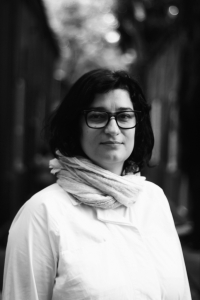

Scenarios of urban futures amid climate change: Rio de Janeiro, Copenhagen and Hargeisa in 2050
What are the future prospects for urban life in the face of climate change? With this question in mind, and mobilising contributions from the humanities and design, this project focuses on building scenarios of possible futures for some cities around the world. These scenarios will offer a speculative overview of the possible consequences of climate change for urban life in 2050. Three cities with very different political and economic situations were selected as the key points for drawing up these scenarios: Rio de Janeiro (Brazil), Copenhagen (Denmark) and Hargeisa (Somaliland). Materialising speculative and imaginative work oriented towards possible futures, the scenarios drawn up in this project will offer input for potentially innovative design projects that seek to deal with the effects of climate change on urban life.


Orlando da Costa Ferreira: A panorama of the Brazilian printing industry
By rescuing part of the collection of bibliologist Orlando da Costa Ferreira (OCF), this project aims to catalogue and map the Brazilian printing industry in the 1950s and 1960s. This will be done by digitising and analysing the texts published by Orlando da Costa Ferreira in newspapers between June 1957 and April 1964. The final product of this research, in addition to the production of scientific articles, will be the launch of a book containing a selection of this material and essays by researchers taking part in the project.
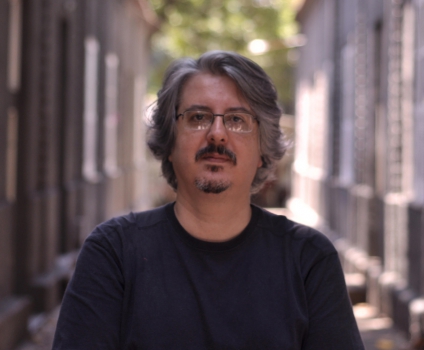

Moving image at a design school
How can an academic project in design avoid anachronisms while maintaining a contemporary pedagogical spirit, committed to the founding ideals of its Bauhausian ‘matrix’? And more specifically, how can the experimental approach to the ‘dynamic image’ presented in works such as those by Lászlo Moholy-Nagy, Man Ray and Oskar Schlemmer be updated, considering the current state of moving image technologies?


Memories of design education at Esdi
This project aims to collect, document, archive and disseminate part of the teaching practices of Esdi, UERJ's School of Industrial Design. The project is based on the importance and pioneering spirit of the school since 1963 and its contributions to design teaching in Brazil, such as its influence in establishing the minimum curriculum for design courses. Despite its prominence, there is still little material available for consultation on the school's teaching and pedagogical practices and much of what is known is preserved by oral accounts and through people connected to the school, both former students and teachers. There are also archives and collections, both at the school and in private collections that have yet to be identified, which document the work and exercises done by students and taught by teachers and which can contribute to a greater understanding of the ways in which design was taught. With regard to the relationship between design and education, existing publications favour historical accounts and curricular issues, but provide little material for an investigation into pedagogical practices. In this sense, the project aims to identify and recover practices through consultations, interviews and the recording of materials produced in order to produce and make available a collection for future research.


MAIDAI Project - Innovation Management
Research, analyse and critique the concepts, elements and factors that influence the actions of technological entrepreneurs that lead to technological innovations, as well as innovation management models that develop regions and change the paradigm of society.


Land, territories and terraforming: images for T(t)erra's resurgences
Taking COP 26 as a starting point, taking into account the visuality of both its institutional framework and the demonstrations in the streets, we realise a certain limitation in the representation of such pressing objectives as the warming of our planet. We understand that even though the objective of reducing greenhouse gases is very well defined, it requires the mobilisation of a much more open imaginary, in other words, other imaginary practices that can give rise to other possibilities for action. We have tried to show here that the guiding authors (Haraway, Latour, Bratton and others) bring with their theoretical approach some practical proposals and, in particular, image practices.
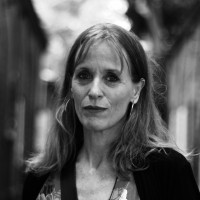

Interaction Design Laboratory for digital artefacts
This project is linked to an interaction design laboratory for digital artefacts to support the PPDESDI's Design and Technology research line. This laboratory is concerned with the various technologies that enable advanced forms of interaction (such as virtual and augmented reality, scanning of three-dimensional objects, and Video Analytics technology) and their applications in the productive sector.
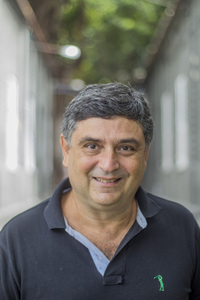

Interaction design in social networks: a historical-critical approach
This project aims to identify historical indicators of the formation of social networks from the perspective of the design of the devices involved. To this end, it seeks to trace lines of continuity between traditional means of communication - such as the handwritten letter, the newspaper, television, the telegraph, and others - and contemporary channels for disseminating messages on social media. The pervasiveness of these channels in today's culture prompts, in addition to a historiography, an in-depth critical analysis of the design of these interactive media, considering their role in capturing attention, their establishment as a means of disseminating news and modelling interpersonal relationships in a public-private sphere.


Information Visualisation, Usability and its Applications
This line of research aims to address methods and techniques inspired by the visualisation of information that effectively contribute to the user experience of the consumer of such information. One of the critical applications that deserves to be highlighted is the visualisation of information in electronic contracts. As a result of the technological revolution and the rise of the network society, the number of transactions carried out electronically has increased, especially given the need for speed in transactions on a global scale. However, contracts and documents originating from electronic means still cause uncertainty as to their validity and effectiveness for consumers, which creates strong legal uncertainty for those who wish to use these contractual means. In other words, the problem of too much data and information creates major difficulties in communication between consumers and companies, causing uncertainty, conflicts in decision-making and even a lack of interest in using this medium. As a methodological basis, the science of design is considered to be the approach by which problems should be dealt with and solutions proposed, considering not only the theoretical component of the issues dealt with, but also the directions and developments in the practical world.


Implementation of an Assistive Technology Laboratory and health products for chronically ill children and adolescents in hospital settings
Co-operation between Escola Superior de Desenho Industrial - ESDI and INSTITUTO FEDERAL DE EDUCACAO, CIENCIA E TECNOLOGIA DO RIO DE JANEIRO (RIO DE JANEIRO FEDERAL INSTITUTE OF EDUCATION, SCIENCE AND TECHNOLOGY)


Image studies and visual representation
Research into the production and reception of images and visual representations in their relation to design as a field and as a project. The research project covers a broad field of images and visual representations: drawing, photography, visual communication, plastic arts, cartographies and infographics. The relationship with design practice is the common element, as is the possibility of analysis through the fields of knowledge that characterise the Design and Anthropology Laboratory (LaDA) research group: design, anthropology, social and political sciences.



How Much Does a Doctor Cost
Development of a parameterised methodology, according to various factors, to calculate the costs involved in medical graduation; Forms of decentralising the provision of health services - A comparative study of the advantages and disadvantages of the various forms of decentralising the provision of health services, such as OSSs, direct management, State Foundations, etc.
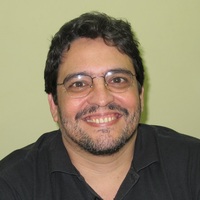

Health service design
How can we design health services that deliver value to the user, care safety and productivity? This research project aims to develop service design solutions and/or artefacts (in the Processes-People-Technologies triad) that promote improvements in the care (end), administrative and training (means) functions for the delivery of quality healthcare to the population. It is understood that the development of this knowledge will be based on the traditional triad of research, teaching and extension, based on collaborative work between lecturers inside and outside the Graduate Programme in Design, students on this programme, as well as institutions inside and outside UERJ that will serve as research cases.
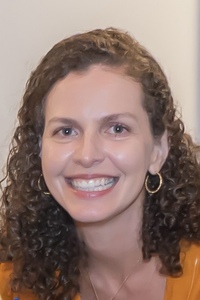

Encountering colour: Brazil's first playful colour prints (1880-1945)
This research aims to investigate the transition in colour printing techniques between manual interpretation and photomechanics. To illustrate this, we will look at the first colour prints produced in the country between 1880 and 1945, in particular the playful prints in the collection of the National Library Foundation. We will consider prints produced for the purpose of entertainment and amusement. In this context, we will look at colourful prints illustrating Brazil's fledgling children's literature, toys and games (aimed at both children and adults). The use of colour has an attractive differential for this type of graphic piece, and is essential as a strategy for persuasion and interest. The historical recovery aims to locate, identify and technically describe this type of print, promoting interest in Brazilian graphic memory and the visibility of seductive pieces from the BN's collection.
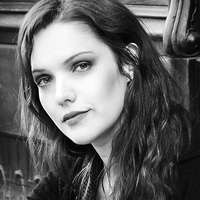

Documentation, analysis and systematisation of parameters for reviewing and updating participation and engagement relationships between those involved in design teaching and research activities
this project seeks to redefine, in anthropological terms, what constitutes design education and research. By specifying the originality that distinguishes them, namely the pedagogical and investigative approaches of (1) learning by doing and (2) collective imagination exercises of transformative futures, the research is complementarily orientated towards a reconsideration of design teaching and research through an anthropological analysis. By combining design and anthropology, it will inevitably also contribute to broadening the scope of studies in the emerging field called design anthropology, which brings together researchers from both areas in search of establishing symmetrical relationships between modes of knowledge production specific to the two areas of study in order to produce innovations for practice and research in the social sciences, such as anthropology, and in the applied social sciences, such as design.


Digital technologies and authenticity: the status of the photographic image in contemporary visual language
The research is aimed at surveying and documenting: a) the state of the art of image processing techniques, fostered by scientific research aimed at developing specific algorithms that operate on digital or digitised photographs; b) the historical roots of the radical reformulation of contemporary visual language that these techniques imply. Both approaches will be guided by the question of the status of photography as evidence.


Designing in the anthropocene: dilemmas, challenges and potential
This project seeks to situate Design in the face of the dilemmas, challenges and potential posed by the emergence of a new geological era in the history of planet Earth, marked by intense and vertiginous environmental changes. This era has been designated on the basis of an increasingly evident mark associated with a certain type of human action: the Anthropocene. In order to investigate the implications of the Anthropocene for the making of design, the project is organised on four fronts: (1) Bibliographical review and survey of the state of the art of studies on the Anthropocene, both within and outside the field of design; (2) Situated Anthropocene: ethnographic, historical, geontological, narrative and speculative research in the historic city centre of Rio de Janeiro; (3) Learning by doing with Afro-indigenous perspectives; and (4) Design as a practice of permacultural correspondence. Aiming to gather scientific support for tackling contemporary social issues, such as maintaining living conditions in the Anthropocene, the project links social and anthropological approaches to the field of Visual Programming Design. Combining various methodological approaches, the project coordinates a series of teaching, research and extension actions to address the following objectives: To investigate what characterises the Anthropocene; To identify the implications of the new geological era for the making of Design; To gather reference material on Design and the Anthropocene; To point towards epistemological and methodological revisions in the field of Design in response to the challenges posed by the Anthropocene; To situate the Anthropocene, investigating the specificity of its incidence in the central region of the city of Rio de Janeiro; To circulate sustainable social knowledge and technologies, such as those produced by indigenous peoples, quilombolas, terreiro peoples, and movements linked to agroecology and permaculture; And to apply Visual Programming skills to the widespread dissemination of the knowledge gathered.


Design, history and graphic memory
This research project deals with historical approaches to design, both in the critical sense of reinterpreting the past in order to give meaning to the present and project the future, and in bringing recent phenomena together in order to understand the experience of the present time. Connections are sought between production techniques and the expressive possibilities of design, in the interpretation of visual languages from the past and the present, situated in their contexts of use and social practices. Through the identification and analysis of graphic manifestations and material culture as central objects of research, the aim is to investigate and reflect on design practices, circulation or consumption of design artefacts, contributing to the visibility of techniques and themes that act in the articulation of identities and cultural processes of signification. The promotion and memory of Brazilian design in its origins and lesser-known manifestations in traditional historiography from the 19th century to the present day is particularly valued.


Design, body and technopolitics
This research project investigates the historical, social and political relations of the field of Design as a device that operates in the conformation of gender and sexuality discourses in Western society. Through Queer, (Trans) Feminist and Decolonial studies, as well as historical research, this project proposes a critical and propositional approach to the political implications of design as a mediation technology in the normalisation of bodies. In this sense, the project also aims to investigate and publicise aesthetic-political practices and graphic memories that form counter-normative networks of resistance to erasure in the face of dominant regimes of visibility in a defined spatiality and temporality such as Brazil - and Latin America from the second half of the 20th century onwards.


Design training
Investigate pedagogical practices, teaching-learning methodologies, curricular proposals and historical aspects of specialized training in Design. Study didactic artifacts, languages, technologies, discourses and learning spaces of this training; Analyze possible sociocultural and pedagogical interactions of specialized and non-specialized training (formal and non-formal) involved in this segment.

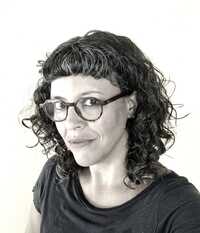

Design of artefacts, technologies, environments and teaching-learning situations
Explore educational situations that involve teaching-learning devices and/or the development of practical activities, projects or prototypes that articulate knowledge from different dimensions or pedagogical resources that contribute to increasing the quality of interaction involving learners.



Design in teacher training
To investigate the exercise of design thinking and participatory design in teacher training (undergraduate, teaching, continuing education); To promote training that encourages the formation of teacher-designers of learning experiences; To record the exercise of teaching practices that make use of stimulating resources and activities, taking into account different cognitive and affective profiles.


Design in motion
It aims to set the field of design in motion, with its theories and practices, through an articulation between different fields of knowledge: design, anthropology, social sciences and politics. This first movement, which is essentially theoretical, unfolds in a multiplicity of practices that involve different actors/agents, institutional and non-institutionalised spaces, as well as a series of methodologies and tools to be tested in experiments.



Design in innovation and business models
This line of research uses design concepts to support the solution of organisational problems, whether when designing a new business or managing an established company.


Design at school: articulations and reciprocal fertilisations between ESDI/UERJ and CAp/UERJ
The project proposes the identification, implementation and dissemination of strategies for articulation and reciprocal fertilisation between spaces, objects and knowledge produced at ESDI and CAp/UERJ, with a view to teacher qualification and the promotion of quality basic education. In this sense, our objectives are: (1) to immerse ESDI professors in the context of CAp/UERJ and vice versa with a view to developing an action plan involving potential agents and spaces from both institutions to make the joint actions identified feasible; (2) to implement and record the actions listed; (3) to publicise the results achieved through the production of articles, events and other appropriate devices, both inside and outside UERJ, ensuring that the synergy between the two institutions is known, strengthened and enduring. We believe that these actions have the potential to promote the integration and engagement of designers, teachers, technicians and managers at UERJ in order to bring competences and curricular content closer to the daily lives and languages/interactions of contemporary students, favouring more exciting learning for these subjects. We believe that in this way we will contribute to building a collaborative base of good practice between ESDI and CAp/UERJ and by actively disseminating it, both inside and outside UERJ, we will foster a fertile path of articulation between Design and Education.



Design as knowledge: challenges for society-orientated research
This project brings together researchers and research laboratories from the PPDESDI (Postgraduate Design Programme of the School of Industrial Design), according to four approaches: (1) Development of history, theory and research in design; (2) Design thinking, implications for design teaching and education in general; (3) Collaborative projects in the fields of politics and production; and Design and the business environment.
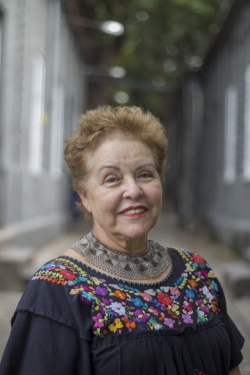

Design as an educational practice
To investigate design processes in teaching-learning strategies, inside or outside formal education, exploring the use of design thinking in activities that integrate knowledge, procedures and affections; that involve the organisation of the needs and desires of the subjects involved; that consider the complex characteristics of the context in which they occur and that promote the use of appropriate technologies, with the aim of providing a qualitative difference for the community involved.


Design and moving image
This research aims to explore the rapprochement between the areas of design and moving images, including cinema, video, animated films, digital images generated by programming and images circulating on social media. It is intended to address the issue from both a historical and contemporary genealogical perspective.


Design and collective memory: digital humanities for open network public history practices
Based on an understanding of design as a device that operates alongside mass communications in shaping discourses and subjectivities - understanding its praxis as a mediation technology in the standardisation of bodies in networked societies - this project promotes investigations into the ways in which technoscience, especially in the period marked by the digital transformation of cultural practices, affects regimes of visibility and collective memory.


Design and city: projects, processes and possibilities
In order to understand urbanity today, it is necessary to grasp the material dynamics of the mobilisation and constitution of metropolitan territories and, at the same time, more specifically, the urban ‘projects’ that are articulated or try to overlap with the former. Here are some clues for reflection: on the one hand, in the transition from the industrial city to the post-industrial megalopolis, the transformations in the modes of production, accumulation and labour itself and, on the other, the consequences of these transformations on the urban project. It's about reflecting on the encounters and mismatches between the material transformations that traverse and (re)structure metropolitan spaces and the political, economic and, above all, design actions that simultaneously try to deal with these dynamics, determine them or are determined by them. Is the crisis the city's or the project's, the way of designing itself? And how can design contribute?


Design and Anthropology: possible connections
To investigate the possibilities of combining modes of knowledge production in design and anthropology, contributing to a critical reflection on transdisciplinarity and its implications for the consolidation of design as a field of research. To contribute to the establishment of research practices in design, here taken as an applied social science, which allow us to point to other ways of tackling the challenges facing this professional area in the midst of the complexity of the contemporary world.


Collaborative creative practices: challenges for design and the city from the perspective of the commons
The recent downgrading of Rio de Janeiro's investment grade and the state's brutal crisis clearly indicate an inadequate development model and a negative legacy of the mega-events held here. The ‘creative’ plays a role in these processes. The research will develop along two axes:


Codesign, City and Citizenship
The project aims to create a platform for the development of collaborative design methodologies that can foster active citizenship through partnerships with different people, institutions and forms of organisation. In this sense, it investigates how different forms of citizen participation are evoked through these methodologies in different social contexts and urban territories, seeking to develop and consolidate design experiments to foster democratic processes based on new forms of citizen participation.



Cinema and Design
Research with various developments on the two-way street between the visual arts and design, and cinema, with an emphasis on the friction between the textual element and audiovisual media.


Barão do Rio Branco House
Focussing on the theme of the occupation of the Barão do Rio Branco House as the headquarters of the Department of Architecture and Urbanism, the students carried out historical and technical research by searching databases, historical archives and interviews with important people responsible for this. The department's campus is located in the city of Petrópolis, currently at Avenida Ipiranga, 544. However, until 2016 it occupied the listed building on Avenida Barão do Rio Branco, named in honour of the famous name in 20th century Brazilian politics, in his former home. Unfortunately, after the Institution bought the site and set up the department that until then belonged to the School of Industrial Design, the space was banned by Petrópolis City Hall and declared inhospitable due to its high level of degradation and unsuitable occupation. In view of this scenario, its current headquarters were rented for the continuation of academic activities. In addition to these factors, a need was identified for an in-depth study of the residence and a better understanding of its former residents, listing processes, purchase, sale and other documentation in the political, economic and historical spheres. In this way, such research could make possible a future intervention to adapt an annex to the institution, such as a postgraduate course and other activities in the space, increasing the quality of teaching given the current lack of space suffered by teachers and students, as well as valuing the heritage, restoration and proper conservation of the building that suffers from arduous government neglect.
For more information visit: https://uerj-arq20181.wixsite.com/witeebs or follow us on Instagram: @divulga.uerj
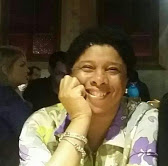

Assistive Technology Design Laboratory
Laboratory for research and development of assistive technology.


Architecture With Feeling: Contemporary crossings between city, design and art on the threshold of culture
The general aim of this project is to situate the idea of architecture and urbanism in the contemporary debate on social emergencies and their relationship with design, art and culture, based on reflections on participation, co-authorship, decoloniality, place, popular practices, alterity, intersubjectivity, contact surface, event, among others. The central hypothesis of the research is to understand that the condition of contemporary architecture and urbanism and social emergencies challenges professionals to create projects that produce displacements of their own ‘fixed identities’ in the construction of an ‘additive disidentification’, where interventions and material culture can be crossed by multiple facets, for example, between architecture, design, art and culture, expanding the boundaries of socially justifiable constructions.


Architecture of Terreiros : Echoes of Afro-Brazilian subjectivity in the space of the sacred
The general aim of this project is to carry out an investigation into the architecture of terreiros in contemporary times, based on their historical relationship with echoes of Afro-Brazilian subjectivity that mark the constructive, formal and typological characteristics of these sacred spaces. The central hypothesis of the research is to understand that the condition of the contemporary architecture of African-origin cult terreiros, in their ways of using space, holds traces that indicate a habitability of traditions, ancestry, quilombismo, etc. The historical relationships, adaptations and strategies of a people who were enslaved and subjected to a new culture of domination generated alternatives of resistance to maintain their faith and religious practices. Thus, the architecture of contemporary terreiros seems to bear many traces of these strategies of resistance and adaptability in their uses and constructive adaptations.


(De)formations in design: oppression in design formative processes
The project seeks to investigate, discuss and combat relations of oppression that manifest themselves in the training process of designers. From the perspective of oppressions, we seek to identify how these are manifested in the multiple facets of the training of designers, such as curricula, pedagogical and institutional practices, relationships with clients and users, etc. Based on the notion of praxis, the research also seeks to develop theory and practice in an articulated way as a way of intervening in reality and transforming and combating the processes of oppression that (de)form designers.
